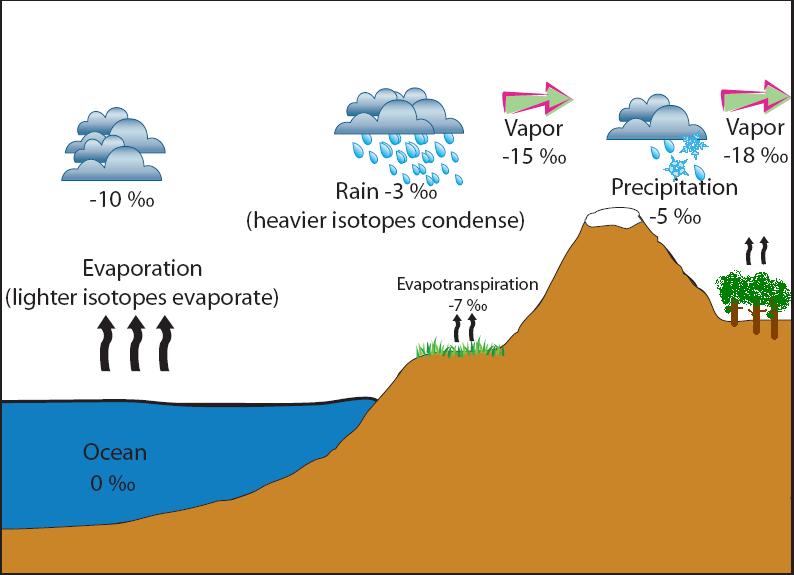Condensation is the transformation of gaseous form of water into solid form i.e. ice and liquid form i.e. water.
Mechanism of Condensation
 The
mechanism of condensation depends upon the amount of relative humidity
present in the air. When the air achieves 100 per cent relative
humidity, it is called as saturated air (no more water vapour can added
to it). The temperature at which air becomes saturated is known as dew
point and condensation starts only at this point. If the temperature at
dew point is above freezing point condensation occurs in the form of
fog, rainfall, etc. On the other hand if the dew point is below freezing
point condensation occurs in the form of snow, frost, etc.
The
mechanism of condensation depends upon the amount of relative humidity
present in the air. When the air achieves 100 per cent relative
humidity, it is called as saturated air (no more water vapour can added
to it). The temperature at which air becomes saturated is known as dew
point and condensation starts only at this point. If the temperature at
dew point is above freezing point condensation occurs in the form of
fog, rainfall, etc. On the other hand if the dew point is below freezing
point condensation occurs in the form of snow, frost, etc.
How saturation of air is achieved
Method 1: When the absolute humidity at a given temperature is raised equal to the humidity retaining capacity of the air.
Method
2: When the temperature of the air is reduced to such an extent that
the humidity capacity becomes equal to its absolute humidity.
Concept of Adiabatic change of temperature
If
the change in temperature of air takes place by the ascent and descent
of air and no addition or subtraction of heat occurs then this process
is known as adiabatic change of temperature. When the air is warmer than
the surrounding air-mass, it ascends. Due to upward movement of air,
volume increases and the temperature decreases. As the dew point is
achieved, condensation process starts and leads to formation of clouds,
fog and ultimately leads to precipitation.Thus instability of air
causes different
weather phenomenon. In the process explained above there is no addition
orOn the other hand if the dew point is not achieved, the air becomes
colder than surrounding air. Thus the air descends and becomes cooler. This leads to stability of air and weather phenomenon get hampered




Post a Comment
Post a Comment